Mastering Streak-Free Glass Cleaning Techniques
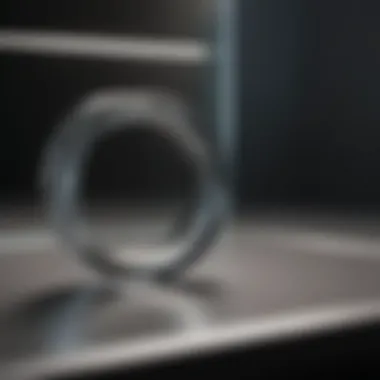
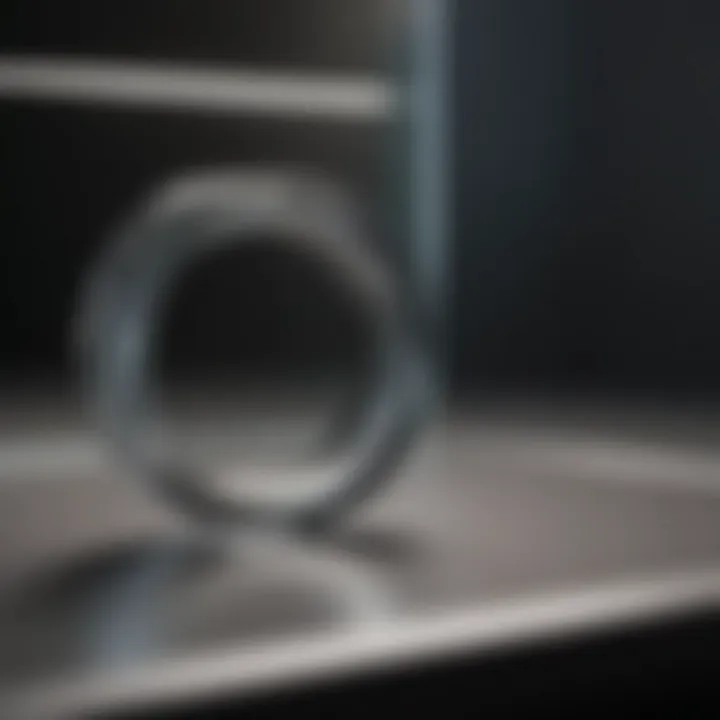
Intro
Achieving streak-free glass is both an art and a science. For homeowners and design enthusiasts, clear and luminous glass surfaces significantly enhance the aesthetic quality of a space. Understanding the materials and methods that lead to such clarity is crucial to maintaining the beauty of glass installations, whether they are windows, shower doors, or decorative elements.
In this guide, we will explore proven techniques effective in producing streak-free glass. We will also discuss the cleaning solutions that yield superior results, along with step-by-step instructions to master both traditional and innovative cleaning practices. Emphasis will be placed also on common challenges, such as stubborn stains or hard water marks, and practical tips to prolong the clarity and longevity of glass surfaces. The following sections are designed to empower individuals with knowledge that directly impacts the visual appeal of their surroundings.
Understanding Glass Surfaces
Understanding the surfaces of glass is crucial for anyone looking to achieve streak-free results. The composition and types of glass directly influence how it interacts with cleaning agents, light, and environmental factors. Knowledge of glass surfaces helps individuals select the appropriate cleaning techniques and materials. This understanding ensures not only cleanliness but also the preservation of the glass itself.
Composition of Glass
Glass is primarily composed of silica, but its formulation can vary depending on the type of glass being produced. This basic ingredient, when combined with other substances like soda and lime, forms a versatile material. Different compositions result in different properties such as clarity, strength, and thermal resistance. For example, borosilicate glass contains boron trioxide and offers high durability against temperature changes.
Types of Glass
When considering glass surfaces, it is vital to recognize the different types. Each type has distinct characteristics that affect cleaning techniques and outcomes.
Clear Glass
Clear glass is the most common form seen in homes and businesses. Its main characteristic is transparency, which provides unobstructed views. This type of glass is often favored for windows and display cases due to its aesthetic appeal.
One unique feature of clear glass is its ability to reflect and refract light effectively, making it an appealing option for interiors. However, it can easily show streaks or fingerprints if not cleaned properly. Thus, having the right cleaning solution and technique is essential to maintain its clarity.
Frosted Glass
Frosted glass provides a blurred effect that obscures visibility while allowing light to pass through. Its main characteristic is its texture, which can be produced through sandblasting or acid etching. This makes it a popular choice for privacy in bathrooms and office spaces.
While it is easier to conceal smudges due to its texture, frosted glass still requires regular cleaning to prevent residue buildup. Careful selection of cleaning agents is critical, as harsh chemicals can damage the finish.
Tempered Glass
Tempered glass is known for its strength and resistance to chipping or breaking. It undergoes a special heating process that increases its durability. This characteristic makes it ideal for safety applications, such as in shower doors and glass railings.
However, cleaning tempered glass might require specific techniques due to its special surface treatment. Using the right materials is vital to avoid scratches. Non-abrasive cloths and suitable cleaners are recommended to maintain its integrity.
Laminated Glass
Laminated glass consists of two or more sheets of glass bonded with an interlayer. This unique construction enhances safety since, in case of breaking, shards adhere to the interlayer. It’s often used in car windshields and glass facades.
The presence of layers can make cleaning slightly more challenging, as traditional methods might leave streaks. It is advisable to avoid ammonia-based cleaners that could damage the interlayer. Instead, a gentle soap solution can be effective for regular maintenance.
Understanding these aspects of glass surfaces is foundational for effective cleaning practices. An in-depth knowledge allows for informed decisions regarding cleaning materials and methods, ultimately contributing to achieving streak-free glass.
Common Issues in Glass Cleaning
Cleaning glass might seem straightforward, but several common issues can hinder achieving the desired streak-free finish. Understanding these challenges is essential for anyone looking to maintain clear glass, whether in homes or commercial spaces. This section highlights the significance of recognizing and addressing these obstacles. Identifying issues like streaks, smudges, and residues not only improves the aesthetics of glass surfaces but also ensures their longevity.
Streaks and Smudges
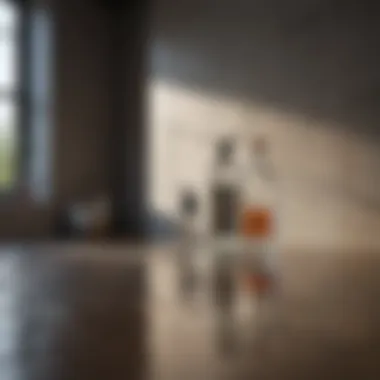
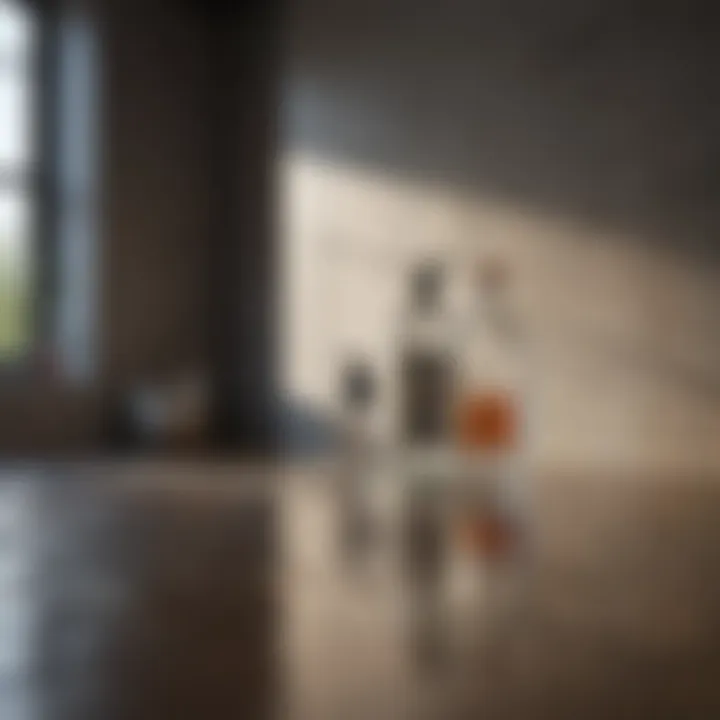
Causes of Streaks
Streaks on glass surfaces are often the result of improper cleaning techniques or using inappropriate materials. One of the key characteristics contributing to streak formation is the presence of excess cleaning solution left on the glass after cleaning. This residue can dry unevenly, leading to unsightly marks. Additionally, cleaning with abrasive cloths can smear oils and dirt rather than removing them, further complicating the situation.
A beneficial strategy for preventing streaks includes using clean microfiber cloths and employing the right amount of cleaning solution. Unique features that set this approach apart involve ensuring the cloths are damp but not soaking wet. This helps in evenly distributing the cleaning solution and minimizing residue. However, failure to follow this method can lead to more streaks and require re-cleaning, which increases labor time.
Identifying Smudges
Identifying smudges is crucial in the cleaning process, as these blemishes can be more pronounced than streaks and often originate from fingerprints, dust, or oils. The key characteristic of smudges is their varied appearance, often appearing as dark spots or runs on glass surfaces. Recognizing these can help prioritize cleaning efforts and improve overall results.
When cleaning, it's essential to address smudges according to their source; for example, kitchen glass may have greasy fingerprints while bathroom mirrors might be affected by moisture. Unique features in tackling smudges include using wet and dry methods to lift the residue effectively. However, persistent smudges can require additional time or stronger solutions for removal, which can be inconvenient and tedious.
Residue from Cleaners
Chemical Residues
Chemical residues can often remain on glass surfaces despite cleaning. These residues usually originate from commercial cleaning products that contain surfactants and other agents. The key characteristic of these residues is their potential to attract dirt and grime, leading to a cycle of repeated cleaning. This can be quite frustrating, especially for those seeking a long-term solution.
A beneficial aspect of addressing chemical residues involves selecting cleaners that are specifically designed for glass surfaces or opting for non-toxic, eco-friendly solutions. These often leave behind fewer residues, promoting a cleaner finish. However, a disadvantage can be the need for more thorough rinsing, which can be overlooked during the cleaning process.
Water Spots
Water spots are another common issue. They typically form when water evaporates and leaves mineral deposits on the glass surface. The key characteristic of water spots is their persistence, as they can be challenging to remove once they settle. This makes it essential to dry the glass thoroughly after cleaning, especially in areas with hard water.
To combat water spots effectively, using distilled water for rinsing or cleaning can help minimize the issue. This is a beneficial choice for those living in hard-water areas. However, relying solely on this method may not address other cleaning challenges, necessitating a more comprehensive approach that includes regular maintenance to keep glass surfaces pristine.
Essential Tools for Glass Cleaning
The effectiveness of glass cleaning largely depends on the tools used. Selecting appropriate tools can make the difference between a flawless finish and a frustrating experience. Essential tools for glass cleaning aid in applying solutions uniformly, removing excess moisture, and minimizing streaks, thus ensuring clarity in glass surfaces. This section explores the tools that help achieve the desired results when it comes to cleaning glass.
Cleaning Cloths and Squeegees
Microfiber Cloths
Microfiber cloths are widely regarded in the cleaning industry for their exceptional ability to pick up dust and grime. Their fine fibers can penetrate small crevices, capturing dirt that other fabrics might leave behind. This is critical when working on glass surfaces where precision is key.
One notable characteristic of microfiber cloths is their absorbency. They can hold multiple times their weight in liquid, making them ideal for use with cleaning solutions. They are gentle on glass, providing a non-abrasive option that does not scratch surfaces, an important factor when maintaining high-quality glass finishes. However, care must be taken to wash them without using fabric softeners, as these can reduce their effectiveness.
Natural Fiber Cloths
Natural fiber cloths, such as cotton or linen, have their own merits. These cloths are also popular for glass cleaning due to their traditional use and sustainability. They effectively soak up liquids and can be washed and reused multiple times, making them an eco-friendly choice.
A key feature of natural fiber cloths is their ability to lint less compared to other materials. This leads to a clearer surface post-cleaning. They can be advantageous in achieving a streak-free finish on glass. However, some may find that they are less effective at picking up dust compared to microfiber options, and their durability may not match that of synthetic fibers.
Cleaning Solutions
Commercial Cleaners
Commercial cleaning solutions are designed specifically for glass surfaces, offering a quick and effective way to achieve streak-free results. These products are formulated to break down grime and grease, making cleaning straightforward. A major advantage of commercial cleaners is their availability and ease of use; they are ready-to-apply and typically require minimal effort to achieve excellent results.
Many commercial options come with specialized ingredients that fight streaks and leave a clear finish. However, it is important to check the ingredients list. Some may contain harsh chemicals that could have negative effects on the environment or human health.
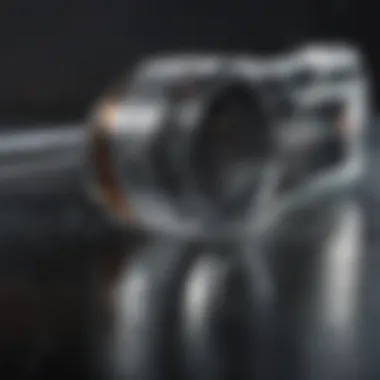

Homemade Solutions
Homemade cleaning solutions are increasingly favored for their simplicity and eco-friendliness. Common ingredients include vinegar and water or lemon juice, which can be mixed to create a streak-free solution. One of the main benefits of homemade solutions is their cost-effectiveness; household items often suffice for achieving clear glass without the need to purchase specific cleaning products.
Moreover, these solutions avoid harsh chemicals, making them safe for both the environment and people. Nevertheless, some individuals may find that homemade solutions require more effort in terms of preparing them or may not be as effective as commercial options on tougher stains.
Cleaning Techniques
Cleaning techniques are central to achieving streak-free glass. Understanding the methods available can dramatically improve the clarity of your glass surfaces. Each technique varies in effectiveness, efficiency, and suitability depending on the specific cleaning project.
Using the right technique not only removes dirt and grime but also prevents streaks, ensuring that your glass looks pristine. With various options available, it is essential to consider the context of your cleaning needs, the type of glass surface, and personal preferences.
Traditional Method
Step-by-Step Guide
The step-by-step guide in the traditional method stands out due its simplicity and effectiveness. This method typically involves using a suitable cleaner and a cloth or squeegee. Its structured approach means users can achieve consistent results, making it popular among many.
One key characteristic of this guide is its accessibility. Most households already have the required tools and cleaners on hand. The unique feature of this method lies in its straightforwardness, allowing anyone to follow along easily regardless of skill level.
However, there are disadvantages. For instance, if not done properly, the traditional method may still leave streaks or lint behind. It requires attention to detail, particularly in the drying phase, to achieve the desired outcome.
Drying Techniques
Drying techniques significantly impact the final appearance of glass surfaces. Immediate and effective drying prevents water spots and streaks from forming. The key characteristic of drying techniques involves the method chosen—using a squeegee versus a cloth, for instance. Squeegees provide a swift and efficient way to eliminate moisture while cloths may require more effort to ensure no lint remains.
The unique feature of proper drying methods is their ability to maintain glass clarity. Using the right approach can enhance the shine and transparency of the glass. Regardless, this method can be labor-intensive, and if rushed, might not yield the optimal result you seek.
Innovative Cleaning Tools
Innovative cleaning tools have emerged as alternatives to traditional methods, offering unique advantages. These tools can often tackle cleaning chores more effectively and with less manual effort.
Steam Cleaners
Steam cleaners harness the power of steam to lift dirt and grime from glass surfaces. This technique is beneficial as it eliminates the need for harsh chemicals. The high temperature of the steam ensures that any stubborn spots are removed effectively without scratches.
A standout characteristic of steam cleaners is their capability to sanitize while cleaning. They are versatile too, as they can be used on various surfaces apart from glass. The downside, however, is the initial investment cost and the time required for setup and heating.
Ultrasonic Cleaners
Ultrasonic cleaners utilize sound waves to create microscopic bubbles that gently clean surfaces. This method excels in removing buildup that traditional methods may miss. One major benefit is its effectiveness on intricate designs and textures, making it suitable for detailed glass items.
Another key feature is that ultrasonic cleaners can clean multiple items simultaneously, which is time-saving. However, they typically require specific care when handling different types of glass to avoid damage. Thus, it is critical to understand their application for best results.
"The right technique is essential for maintaining the aesthetic appeal of glass surfaces."
Tips for Maintaining Streak-Free Glass
Maintaining streak-free glass is not only about achieving a clean look but also prolonging the life and quality of the glass surfaces. The importance of this topic lies in the fact that streaky glass can detract from the aesthetic value of a home or commercial space. In addition, frequent streaking may indicate improper cleaning techniques or the use of inferior materials, which need to be addressed. This section covers the fundamental practices that help keep glass surfaces pristine, ensuring they always look their very best.
Frequency of Cleaning
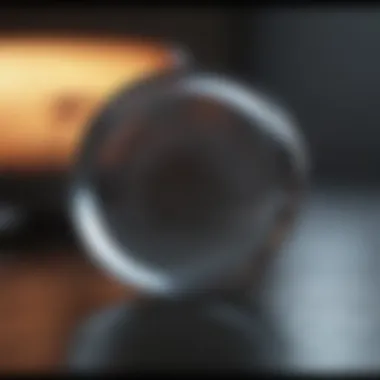
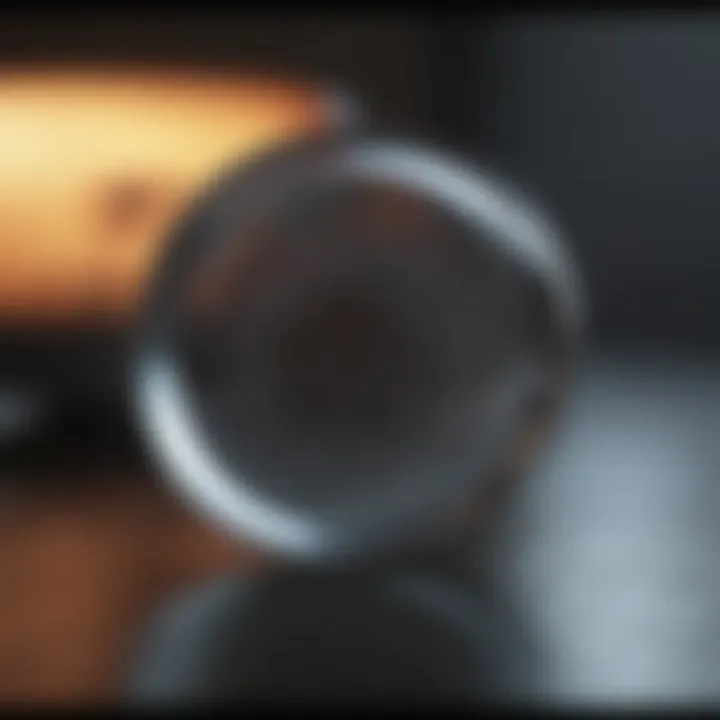
The frequency of cleaning is a vital aspect of maintaining streak-free glass. How often one cleans glass surfaces can vastly influence the overall appearance and condition of the glass. Generally, high-traffic areas, such as windows, mirrors, and shower doors, require more regular cleaning compared to other less exposed surfaces. Cleaning these areas every couple of weeks is advisable, especially if they are subjected to frequent use or external environmental elements.
Moreover, considering the materials and conditions around the glass surfaces is crucial. If the glass is subjected to dust, pollen, and moisture, the need for diligent cleaning increases. Adjusting your cleaning schedule according to these factors can result in a significant decrease in streak formation, leading to better maintenance of glass clarity.
Preventive Measures
Choosing the Right Time
Choosing the right time for cleaning is another effective preventive measure. Factors such as weather and time of day can greatly impact the success of cleaning techniques. It is typically best to clean glass surfaces in cooler parts of the day, like early morning or late afternoon. This avoids the harsh sunlight that can dry cleaning solutions too quickly, leading to potential streaks. The importance of timing cannot be overstated; ensuring the right conditions during cleaning can significantly enhance results.
A key characteristic of choosing the right time is the impact of heat on cleaning solutions. When temperatures are high, cleaning agents may evaporate before effectively lifting dirt or residues. Thus, tackling cleaning tasks at more optimal times can result in a smoother cleaning process, manifesting in clear surfaces.
Environmental Factors
Environmental factors also play a significant role in the maintenance of streak-free glass. Elements such as wind, humidity, and pollution can influence how quickly dirt and grime accumulate on glass surfaces. For instance, in urban settings where pollution levels can be elevated, it may require more frequent cleaning sessions to keep surfaces clear.
Recognizing these environmental impacts is beneficial because it allows for proactive maintenance strategies. Adapting cleaning frequency based on the current environmental conditions leads to better care of glass surfaces. The unique feature of understanding environmental influences is its direct correlation to the maintenance effort required, thus optimizing cleaning practices for superior results.
Environmental Considerations
Maintaining streak-free glass is not solely about achieving a visual appeal; it also involves serious environmental considerations. The choices made in selecting cleaning agents and methods can significantly impact our surroundings. In today’s context, where sustainability has become increasingly critical, understanding the environmental implications of glass cleaning is essential.
One critical element of this consideration is the adoption of eco-friendly cleaners. Many traditional glass cleaners contain volatile organic compounds (VOCs) that can contribute to air pollution and pose health risks. By opting for eco-friendly cleaners, you not only contribute to a cleaner environment, but you also promote healthier indoor air quality. These products typically utilize plant-based ingredients and minimal synthetic chemicals. They perform just as effectively as conventional products but with less environmental footprint. This shift towards green products reflects a growing trend among consumers who are not only mindful of cleanliness but also of ecological impact.
Eco-Friendly Cleaners
Using eco-friendly cleaners is a significant step toward sustainable living. These cleaners generally contain ingredients that break down easily in the environment, making them safer for both users and nature. Common eco-friendly options include:
- Vinegar and Water: A simple mixture that effectively removes smudges and streaks, while being gentle on the Earth.
- Baking Soda: Not only a natural deodorizer but also an effective scrubbing agent to clean tough stains.
- Castile Soap: Derived from vegetable oils, it provides a safe and non-toxic cleaning alternative.
- Essential Oils: These not only add a pleasant fragrance but also possess antifungal and antibacterial properties.
Switching to these alternatives requires a slight adjustment in cleaning habits but rewards users with a pride in contributing positively to ecological sustainability.
Reducing Chemical Use
Another vital aspect of environmental considerations is the effort to reduce overall chemical use. The presence of harsh chemicals in many cleaning products poses risks not only to human health but also to aquatic and terrestrial ecosystems. Over time, these substances can accumulate in waterways, adversely affecting wildlife and human communities.
To minimize this impact, consider the following strategies:
- Dilution: If using commercial cleaners, follow the instructions carefully. Often, using less product, combined with proper dilution, is sufficient for effective cleaning.
- Regular Maintenance: Maintaining glass surfaces regularly can reduce the need for aggressive chemicals. A simple dusting routine can simplify cleaning tasks over time.
- Reevaluating Needs: Often, products marketed as necessary for cleaning are not essential. Evaluate your space and determine what is genuinely required for maintenance.
- Homemade Alternatives: Developing your homemade cleaning solutions can minimize reliance on commercial products.
Each reduction in chemical use contributes to broader efforts toward environmental protection.
"Every small change counts. By choosing eco-friendly products and reducing chemical use, you can make a positive impact on the planet’s health while enjoying streak-free glass."
End
In the realm of glass cleaning, achieving streak-free surfaces is not just about aesthetics; it also encompasses maintaining the integrity and functionality of the glass. This article has provided an in-depth overview of the techniques and materials essential for effective glass cleaning. By understanding the fundamental aspects of glass surfaces and recognizing common issues, individuals can significantly enhance their cleaning efforts.
Recap of Key Techniques
To summarize, here are the key techniques covered that contribute to streak-free glass:
- Utilization of Proper Tools: Using the right tools such as microfiber cloths and squeegees promotes an efficient cleaning process.
- Selection of Cleaners: Both commercial solutions and homemade cleaners can be effective, but their choice should consider the specific type of glass being cleaned.
- Washing Techniques: Employing traditional methods with a systematic approach or leveraging innovative tools like steam cleaners can yield excellent results.
- Maintenance Practices: Establishing regular cleaning routines and preventive measures helps maintain the clarity of glass surfaces for longer periods.
Final Thoughts on Glass Cleaning
Cleaning glass effectively extends beyond mere appearance. It involves appreciation for transparency, clarity, and the role glass plays in our environments, be it in homes or commercial spaces. By prioritizing eco-friendly solutions and minimizing chemical use, individuals not only cleanse their glass but also contribute to environmental well-being.







